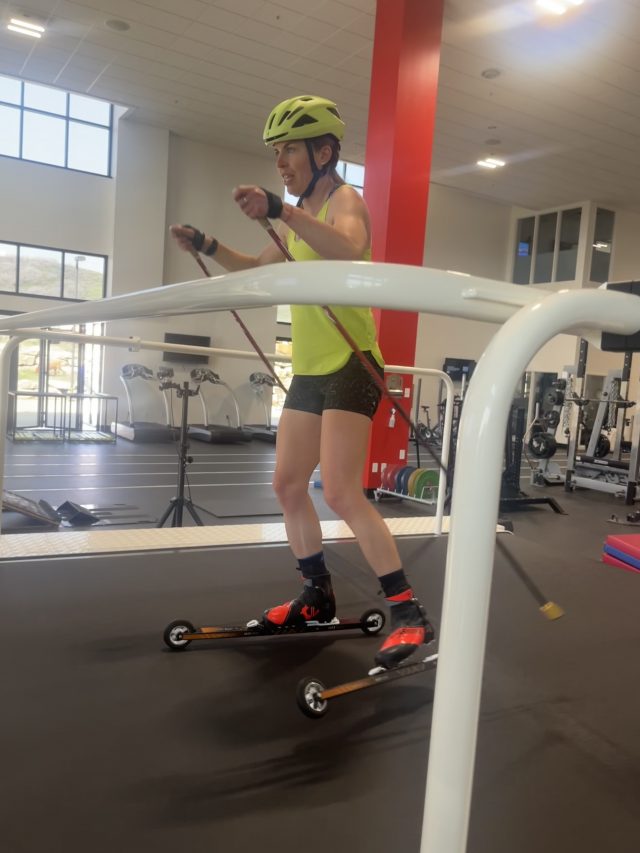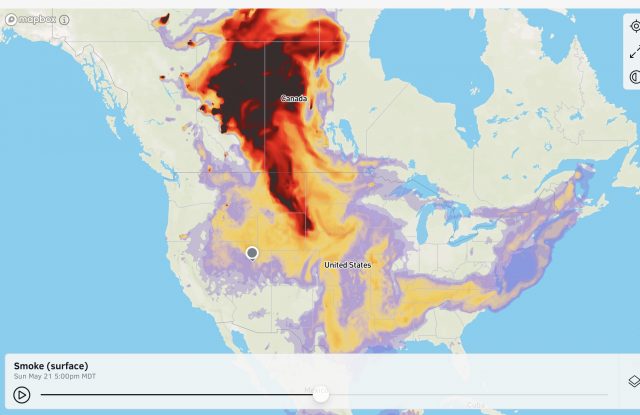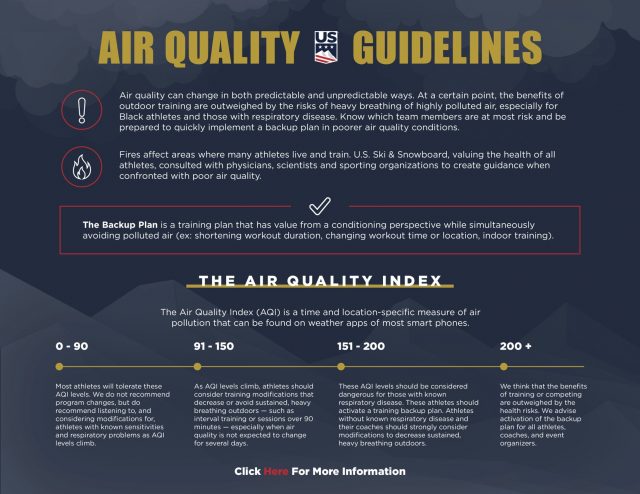Author’s disclaimer: I am not a chemist nor atmospheric scientist, but as a physical therapist who tries to think of the body holistically (and as an endurance athlete living and training in a region prone to bad air quality), I have done my best to research this topic. For greater detail, please consult a true expert in the field.

The air we breathe is precious. Whether simply sustaining life functions or powering the aerobic metabolism that gives our muscles energy, we can’t get by without it. Fortunately it is always there (though maybe a bit less so at high elevation), but the quality of the air can vary from sublime to very unhealthy. The main antagonists are particulate matter and ground level ozone.
Airborne particulate matter is generally categorized by size. PM10 is 10 microns or smaller in diameter. This is stuff like dust and mold. PM2.5 is much smaller and tends to pose greater health risks due to the ability of the tiny particles to infiltrate the lungs and bloodstream. Most PM2.5 comes from chemical reactions and combustion like automobile exhaust and wildfire smoke.
Ground level ozone is different from the ozone layer in the upper atmosphere. While the latter helps protect the earth from solar radiation (i.e. good for us), the former can be very irritating to the tissue of our lungs and airways (i.e. bad for us). Ground level ozone is not so much a thing like PM2.5 particles–it is technically the byproduct of chemical reactions between nitrogen oxides and volatile organic compounds in the presence of sunlight. Basically, pollution + hot sun = ground level ozone.
Geographic considerations. Areas that are prone to temperature inversions where the lower elevation air is colder than at higher elevation–typical of mountain valleys–can see pooling of PM2.5 in the valleys. This is a very common phenomenon during Salt Lake City winters. Thankfully, while the air quality might be very unhealthy in the valley, it can be quite good at higher elevations above the “gunk layer.” Ground level ozone, due to the source of its reactants, tends to be proportional to population density so typically much greater in urban areas. Get out of the city, and you can get out of the ozone. Unfortunately, there is no hiding from the PM2.5 of wildfire smoke, except maybe staying indoors.
Air Quality Index
The Air Quality Index (AQI) is a scale used to report air quality rather than the actual measurement of PM2.5 or ozone. While many state governments and universities have sensors and report measurements, the AQI attempts to rate the current air quality regardless of the pollutant. In the US, the Environmental Protection Agency has categories for the health risks associated with elevated AQI. Last summer, after much research and collaboration, US Ski & Snowboard released its own guidelines for winter sports athletes.
Resources
AirNow.gov is likely the best source for real-time AQI in the US. Additionally it contains a large library of information on all things air quality.
Purple Air not only sells low cost air sensors for home use, but also makes the data from those sensors available to all. This allows for much more geographically specific information; however, as AirNow points out Purple Air sensors “consistently overpredict fine particle concentrations” so take it with a grain of salt.
The iphone weather app has AQI for cities around the world.
NOAA has a (free) smoke forecast map; however, it is not the most user friendly.
Open Summit has a very user friendly smoke forecast map but does require a subscription to access. Worth noting, you’ll see that neither the Open Summit nor NOAA maps will forecast more than about 48hrs. It’s my understanding that the computer models that predict wildfire smoke location and density are not nearly as good as those that forecast the weather.

Ned Dowling
Ned lives in Salt Lake City, UT where his motto has become, “Came for the powder skiing, stayed for the Nordic.” He is a Physical Therapist at the University of Utah and a member of the US Ski Team medical pool. He can be contacted at ned.dowling@hsc.utah.edu.




